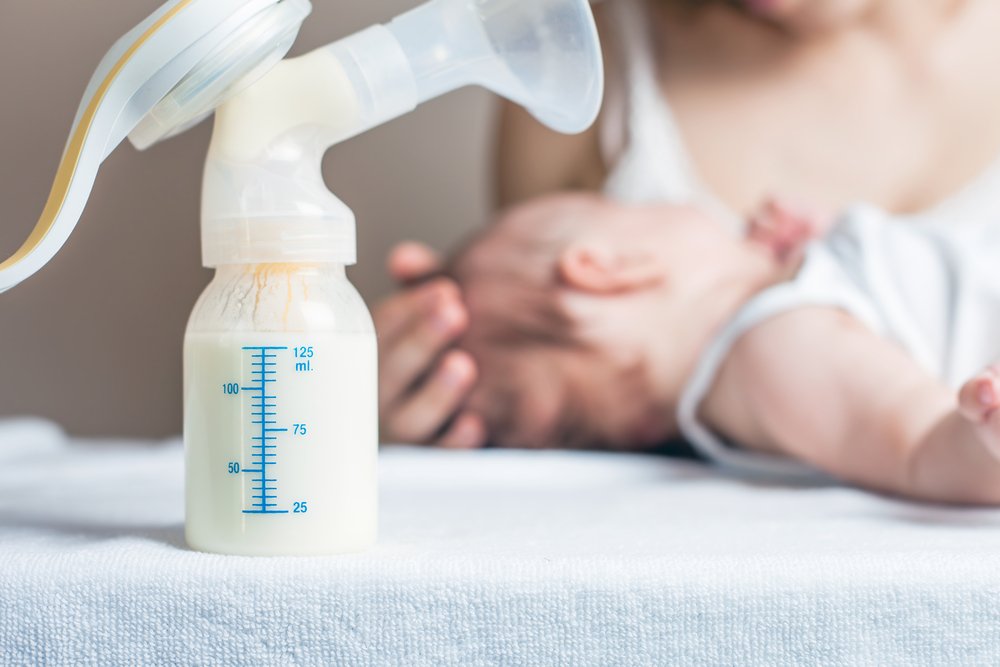Learn how to combine breastfeeding and pumping. Discover the benefits of pumping while breastfeeding and how to schedule pumping when breastfeeding a newborn.
Choosing to breastfeed your newborn provides you and your baby with so many wonderful benefits. For many new mothers, choosing to breastfeed their newborns can seem overwhelming at first, especially when it comes to pumping.
How to combine breastfeeding and pumping, when and why you might pump, and other concerns are all perfectly normal questions. Read on to learn how to successfully combine breastfeeding and pumping and what some of the benefits of introducing a pumping schedule to your nursing routine are.
What Are The Benefits of Pumping Breast Milk?
No matter how you look at it, breastfeeding your newborn is a commitment. While you are making the adjustment to breastfeeding your newborn, the thought of adding pumping into the mix can feel even more stressful.
You may even wonder “do I need to pump if I am exclusively breastfeeding?” And while you most certainly do not have to pump to successfully breastfeed your baby, there are many reasons why you may want to or even need to combine breastfeeding and pumping.
Some of the most common reasons women choose to pump while breastfeeding are:
- To help increase milk supply: There are a lot of reasons you may find that you need to help encourage your body to produce more milk. A low milk supply can result from hormones, medications, improper breastfeeding latch, and more. Because your milk supply is produced based on demand, a consistent pumping schedule combined with breastfeeding can help you increase your milk supply.
- Relief from engorgement: Sometimes when breastfeeding, your breasts can become engorged, or swollen when overfilled with milk. Pumping can help alleviate swelling and discomfort. If you are away from your baby, or they do not nurse long enough to empty the breast, a pump can help prevent engorgement altogether as well as painful complications like mastitis.
- To have extra milk for bottles: Pumping while breastfeeding provides you with extra breast milk to store and use for bottle feeding when you can not be available for nursing. Whether that is returning to work, an unforeseen illness, or allowing other caregivers to feed your newborn, pumping makes it easier for many women to feed their babies with breast milk exclusively for longer periods of time.
Once you have decided to combine pumping with breastfeeding, it is important to learn as much as you can about how and when to incorporate pumping into your breastfeeding schedule.
Be sure to download the Kinedu app to watch expert-led classes about breastfeeding and other relevant topics for parents.
How to Combine Breastfeeding and Pumping With A Newborn
If you have chosen to pump while breastfeeding before you deliver your baby, most hospitals have a lactation consultant that can help teach you how to combine breastfeeding and pumping and when to pump while breastfeeding a newborn.
While the hospital or birthing center will have breast pumps available, it is a good idea to bring your own with you so that you can begin getting comfortable using the pump you will have at home.
If you are pumping while breastfeeding during the first two weeks, it is recommended that you pump in a way that follows your baby’s feeding style. Breastfed newborns cluster feed, meaning they have more frequent, shorter feedings.
During this time, you will want to practice what is referred to as power pumping. You will want to try and incorporate two power pumping sessions a day during the first two weeks of nursing your newborn.
An example of a power pumping schedule looks like this:
- Pump for 20 minutes
- Rest for 10 minutes
- Pump for 10 minutes
- Rest for 10 minutes
- Pump for 10 minutes
After you and your newborn have adjusted to a more routine and regular feeding schedule, you may want to continue pumping to build up your extra milk supply. When doing this, you will want to pump immediately following a breastfeeding session.
A sample breastfeeding and pumping schedule for newborns may look like this:
- 5 am- Breastfeed then pump for 10-15 minutes.
- 7 am- Breastfeed
- 10 am- Breastfeed
- 12 pm- Breastfeed then pump for 10-15 minutes
- 2 pm- Breastfeed
- 4 pm- Breastfeed
- 7 pm- Breastfeed
- 9 pm- Breastfeed then pump for 10-15 minutes
- 1 am- Breastfeed
Remember that every newborn baby will feed at different intervals. The goal when combining pumping with breastfeeding your newborn is to pump for 10-15 minutes after you feed your baby around 3 times a day.
Tips For Pumping While Breastfeeding
There is so much to learn and adjust to in the first few months as a new mother. Choosing to breastfeed your baby and pump takes time and patience. Make sure to drink plenty of water and get rest as often as you can.
While you are starting out, here are some tips to make pumping a little easier:
- Invest in a good breast pump, hands-free models can be a life-saver.
- Stay hydrated and eat healthy, nutrient-rich foods.
- Find a quiet and relaxing place to pump.
- Store your breastmilk properly.
- Stick to your pumping schedule and nurse your baby on demand.
- Ask for help when needed.
Breastfeeding alone is a major commitment to your baby’s health and nutrition. Every mother and every baby is different. As your baby grows, your breast milk will change.
You may also discover that as time goes on, your reasons for pumping may also change. Even the most experienced mothers who understand how to combine breastfeeding with pumping will need help along the way.
The best way to get answers to your questions on breastfeeding is with individual coaching sessions with a certified lactation expert. Lactation consultants are an invaluable resource for breastfeeding mothers.







